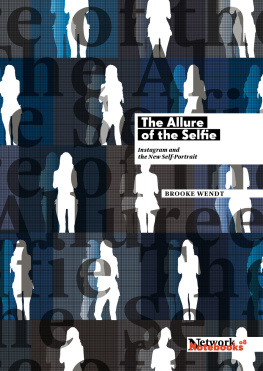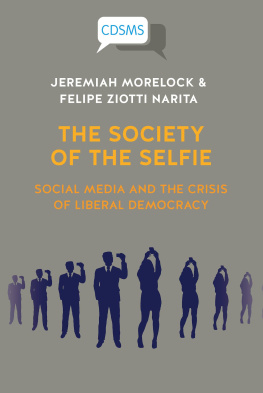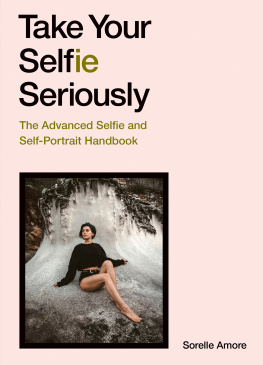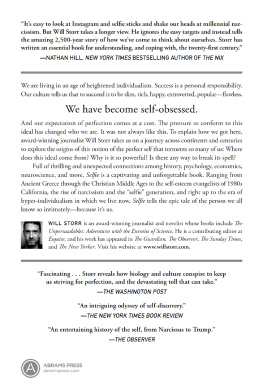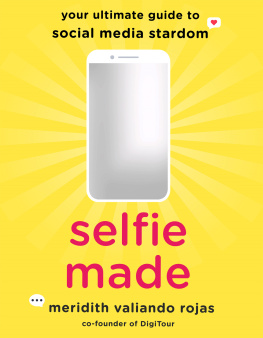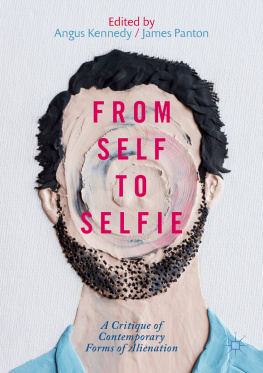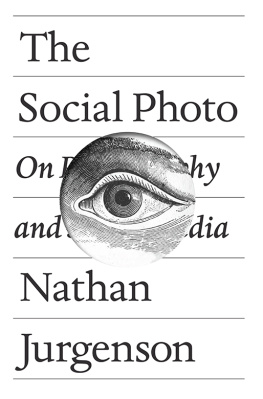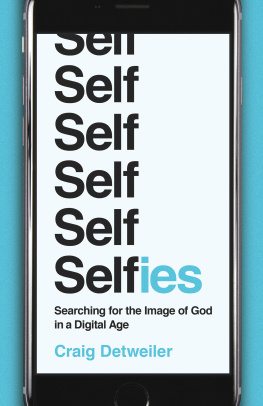The Allure of the Selfie: Instagram and the New Self-Portrait
Over 130 million images with the hashtag selfie have been uploaded to the social media platform Instagram. In The Allure of the Selfie: Instagram and the New Self-Portrait, Brooke Wendt examines the significant hold that the selfie, or the digital self-portrait, has over self and society. Media theorist Vilm Flusser observed that society could become programmed to snap pictures for the sole benefit of cameras, as though under a magical spell, if photographs continued to be undecoded. Wendt examines this magical spell by analyzing users self-portraits on Instagram, one of the most popular contemporary platforms for image production.
Marshall McLuhans reframing of the Narcissus myth elucidates the allure of the selfie. McLuhan notes that Narcissus was numb to his mirror image and did not recognize his reflection as his own he thought his image was that of another. As though unaware that we are looking at ourselves, we quickly become numb to our selfies, taking numerous pictures of ourselves without hesitation. It is the promise of pluripotentiality that fascinates us; however, we are also perpetually tempted and trapped by the notion of creating an ideal self with digital tools such as filter and hashtag functions. In the five essays comprising The Allure of the Selfie: Instagram and the New Self-Portrait, Brooke Wendt thus questions the changing nature of identity and the self-portrait in the age of Instagram.
Brooke Wendt is a visual culture critic, photographer, and curator. She holds a BFA in Photography from Kendall College of Art and Design (Grand Rapids, Michigan) and an MA in Critical Theory and Creative Research from Pacific Northwest College of Art (Portland, Oregon). Currently, Brooke Wendt works as a strategic researcher in the design strategy field and questions the purposes of new technologies.
Institute of Network Cultures, 2014.
Colophon
Network Notebooks editors: Geert Lovink and Miriam Rasch
Design: Medamo, Rotterdam www.medamo.nl
ePub development: Andr Castro
Printer: Printvisie
Publisher: Institute of Network Cultures, Amsterdam
Supported by: Amsterdam University of Applied Sciences (Hogeschool van Amsterdam), Amsterdam Creative Industries Publishing, Stichting Democratie en Media, Pacific Northwest College of Art
If you want to order copies please contact:
Institute of Network Cultures
Hogeschool van Amsterdam
Rhijnspoorplein 1
1091 GC Amsterdam
The Netherlands
http://www.networkcultures.org
books@networkcultures.org
t: +31 (0)20 59 51 865
ePub and PDF editions of this publication are freely downloadable from: http://www.networkcultures.org/publications
This publication is licensed under Creative Commons Attribution-NonCommercial-NoDerivs 3.0 Unported (CC BY-NC-ND 3.0) To view a copy of this license, visit creativecommons.org/licenses/by-nc-sa/3.0/. Regarding the images used, all rights belong to their respective owners.
Amsterdam, October 2014
ISBN 978-90-822345-1-0 (print)
ISBN 978-90-822345-2-7 (ePub)




Network Notebook Series
The Network Notebooks series presents new media research commissioned by the INC.
PREVIOUSLY PUBLISHED NETWORK NOTEBOOKS:
Network Notebooks 07
Henry Warwick, Radical Tactics of the Offline Library, 2014.
Network Notebooks 06
Andreas Treske, The Inner Life of Video Spheres: Theory for the YouTube Generation, 2013.
Network Notebooks 05
Eric Kluitenberg, Legacies of Tactical Media, 2011.
Network Notebooks 04
Rosa Menkman, The Glitch Momentum, 2011.
Network Notebooks 03
Dymtri Kleiner, The Telekommunist Manifesto, 2010.
Network Notebooks 02
Rob van Kranenburg, The Internet of Things, 2008.
Network Notebooks 01
Rosalind Gill, Technobohemians of the New Cybertariat, 2007.
Contents
Acknowledgments
In fall 2012, as part of my graduate studies, I began studying Instagram user self-portraits. The users whose images I discuss in this notebook may or may not have knowledge that I critiqued their selfies, as I did not interview users about their images. My study is assumptive, and my work is influenced by the research of Marshall McLuhan and Vilm Flusser. Thank you to the users who kindly gave me permission to republish their images.
I would like to recognize my professors, Anne-Marie Oliver, Barry Sanders, Joan Handwerg, Marie-Pierre Hasne, and Elie Charpentier, for their guidance and wisdom.
Langdon Herrick, thank you for your feedback and numerous hours of assistance.
Evangelina Owens, thank you for your never-ending words of encouragement and advice, as well as your countless hours of support.
I am very grateful to Miriam Rasch and the Institute of Network Cultures staff for publishing my research. I greatly appreciate their hard work and efforts.
This notebook is dedicated to my family, who provide only love and support.
Introduction
THE APPEAL OF THE SELFIE
More than 130 million user images and videos have been hashtagged with the word selfie on Instagram. #I, #me, #myself, #self, #selfie, #selfies, and #selfportrait account for over 439 million user images and videos as of June 2014. According to journalist Elizabeth Day, the first #selfie image appeared on the image-hosting site Flickr in 2004. This type of digital self-portrait is taken with a mobile phone and characterized by its ubiquity. The social image-sharing platform Instagram, which is an app designed for iPhone and Android, allows people to capture, stylize, and share images with family, friends, and strangers via their smartphones. This app is extraordinarily popular, as it is an all-in-one photographic program that processes and publishes an image in seconds. With numerous image filters and hashtags at our disposal, Instagram creates infinite possibilities to customize selfies. Although we can alter images of ourselves with instantaneous and automated effects, the ability to express our individuality is restricted to the set of commands within the program. Instagram, it seems, has defined the look of an entire generation.
It was perhaps unforeseen that people would generate an astronomical amount of selfies and that our desire to capture and share selfies would become a global phenomenon. This attraction to selfies appears to be similar to media theorist Marshall McLuhans reframing of the Narcissus myth in which he explains that men at once become fascinated by any extension of themselves in any material other than themselves. McLuhan, in contrast to the popular version of the Narcissus myth, observes that Narcissus did not fall in love with himself but rather, numb to his image, he could not recognize his reflection as his own. We seem to be experiencing a similar situation of misrecognition when we use Instagram. As though unaware that we are looking at ourselves, we become numb to our self-portraits and produce many different versions of ourselves. Moreover, we appear to be lured to, and seem powerless to resist, Instagrams tools for creating ever-greater stylized identities.

